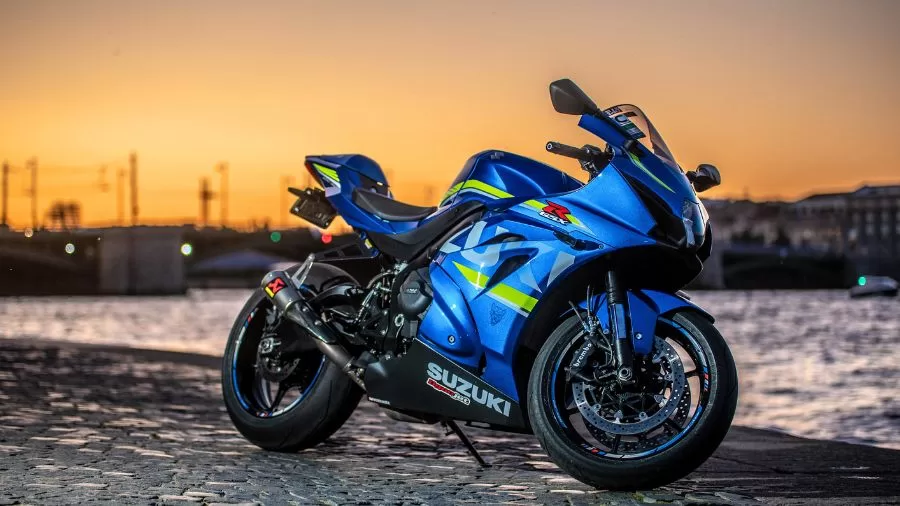Auto
Essential Motorcycle Safety Tips Every Rider Should Know Before Hitting the Road

Motorcycles often an unparalleled sense of freedom and adventure on the road, but they come with unique risks. Motorcyclists are far more likely to die in traffic accidents as compared to car occupants simply because of how they are exposed on the road, which is why knowing the essential steps to take immediately after a motorcycle accident is important. Riders always need to prioritize safety on the road to mitigate risk, so learn the actionable tips you need to know to ride safely and confidently on the road.
1. Gear Up: The Right Equipment Can Save Your Life
The first step in protecting yourself on the road as a motorcyclist is to ensure you are wearing all the proper gear. At a minimum, this should include:
- Helmet Safety: A high-quality, DOT-approved helmet is essential and full-face helmets provide the most comprehensive protection for your head, face, and chin. Studies show helmets are 37% effective at reducing deaths in riders and 67% effective in reducing head injuries per the CDC.
- Protective Clothing: Riding jackets, gloves, pants, and boots designed for motorcyclists are made from durable materials like leather or Kevlar and these can help prevent severe injuries during a crash.
- Reflective Gear: Wearing reflective strips or bright-colored clothing enhances visibility, especially in low-light conditions, which is critical for ensuring drivers see you on the road.
- Optional Safety Accessories: Consider investing in additional protective gear, such as airbag vests, spine protectors, and reinforced padding, for added safety during longer or high-speed rides
2. Master Defensive Driving on the Road
Defensive driving means anticipating any potential dangers ahead of time and staying prepared to react quickly in the event of issues. The best tips for keeping yourself defensive on the road include:
- Stay Visible: Many accidents occur because car drivers fail to see motorcyclists, so ride where you’re easily visible and avoid blind spots of trucks and SUVs.
- Keep a Safe Distance: Maintain enough space between you and the vehicle ahead to allow room for sudden stops or evasive actions, with a good rule of thumb being to keep a 3 to 4-second following distance.
- Anticipate Driver Behavior: Watch for erratic driving, sudden lane changes, or drivers who seem distracted, and assume that drivers may not see you so that you’re always prepared to react.
- Be Mindful of Road Hazards: Gravel, potholes, wet leaves, and uneven pavement pose greater risks to motorcycles than cars, so slow down when approaching potentially hazardous areas.
3. Conduct a Pre-Ride Safety Check
Before every ride, you should always conduct a safety check which is intended to ensure all parts and systems are in working order. First and foremost, take care of the following:
- Inspect Your Motorcycle: Check the tires for adequate pressure and tread depth, as well as ensure the brakes are responsive and verify that all lights and signals are functioning properly.
- Check Weather Conditions: Riding in the rain, wind, or extreme heat requires additional preparation and caution so you should always have gear suitable for the expected weather.
- Plan Your Route: Familiarize yourself with your intended path and opt for roads with less traffic and smoother conditions, whenever possible, to reduce risks.
4. Practice Safe Riding Techniques in a Group
There’s nothing better than hitting the open road with your friends who all have motorcycles as well, but it’s all the more reason to stay vigilant. Riding in a group adds an extra layer of complexity but can be safer and more enjoyable when handled correctly. Below are a few tips which can help your entire group stay safe:
- Set a Group Pace: Ensure everyone in the group rides at a comfortable and safe speed, with the slowest rider being the one to dictate the pace.
- Use Proper Formation: Staggered formations provide better visibility and space for each rider, so avoid riding side-by-side unless at very low speeds.
- Communication is Key: Use pre-agreed hand signals to indicate stops, hazards, or turns, as communication ensures the group stays organized and avoids confusion.
- Plan Breaks and Stops: Fatigue can be a problem on long group rides so schedule regular stops to rest, refuel, and regroup.
5. Follow All Traffic Laws and Ride Smart
Far too many motorcycle accidents happen because riders choose to disobey traffic laws and ride recklessly. To avoid finding yourself as a part of this group, heed the following advice:
- Follow Speed Limits: Excessive speed reduces your reaction time and increases the severity of accidents, so always ride at a safe speed, especially when you’re in inclement weather or unfamiliar terrain.
- Practice Lane Discipline: While lane splitting is legal in some states, it’s crucial to practice it safely and within the legal parameters, so be cautious and avoid tight gaps between vehicles.
- Use Signals and Communication: Clearly signal your intentions when turning or changing lanes by using hand signals as an additional precaution, in conjunction with your turn signal, to ensure other drivers understand your movements.
6. Keep Yourself Sober and Alert
Your mental and physical state will play a major role in how safe you are while on your ride. To that end, always avoid alcohol and drugs which can impair your judgment, reaction time, or motor skills. Even over-the-counter medicine can cause dangerous side effects, so check with a doctor before hitting the road. Additionally, long rides can be fatiguing, which leads to slower reflexes and poor decision-making as well. Take regular breaks and hydrate yourself frequently to stay sharp and alert.
Make safety your priority on the road
Getting behind the handlebars of a motorcycle is an exhilarating experience, but safety should always be at the top of mind. Wear the right gear, master defensive driving habits, conduct all pre-ride checks, and stay vigilant in order to enjoy the open road safely and with greater confidence. Safety is a choice and it’s one which can save your life just as much as others, so always prioritize the above tips when you ride to make every journey as safe as it is thrilling.

























































